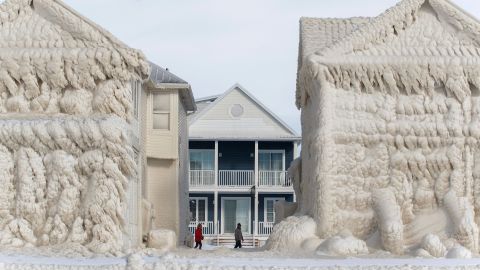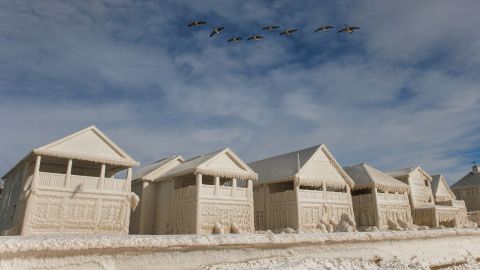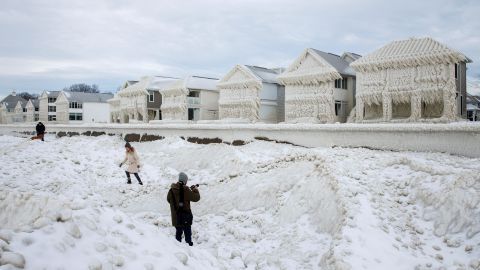CNN
—
Lakefront homes in Ontario were covered in a thick, spiky sheet of ice. Blizzard last weekend Cool waves on the shore.
Residents of the Fort Erie community, coincidentally named Crystal Beach, said waves crashed into their Lake Erie breakwall during the storm.
“Then the water froze on the back of the houses, so it came down from the tops of the houses,” said Derek Dupling. CNN news partner CTV. “So you can imagine the sheer volume and force of the water coming over the wall, hitting it and freezing it — flash freeze — instantly. It’s absolutely incredible.”
The community is west of Erie County, New York. Historic blizzard death toll More than three dozen have risen, most of them in the city of Buffalo.

Buffalo Girl meets the sister of a crippled man saved from a blizzard
Overnight low temperatures in Fort Erie dipped into the single digits during the storm — about 20 degrees below the average for this year. Forecasters from the National Weather Service warned of 60 mph winds on Lake Erie during the storm’s peak last Friday and Saturday, and waves that could reach more than 25 feet. Forecasters warned that “heavy freezing spray” could accumulate nearly an inch per hour.
As those waves hit the shore, the super-cold water quickly froze on the surface.
Dupling told CTV that the ice piled up on Crystal Beach homes was at least a foot thick, and that residents were concerned about damage from the weight of the ice.
“We’ve been here a long time and haven’t seen bad weather in that time,” Dupling said. “The damage and destruction to the back of these houses where we are now is unbelievable.”
Temperatures in the Fort Erie area are expected to climb into the 40s on Thursday and into the 50s on Friday — about 20 degrees above normal — which could lead to a massive thaw and ponding.


